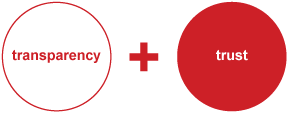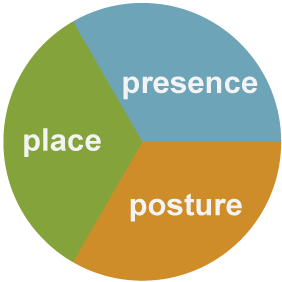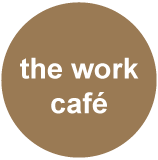| |
Creating environments that support innovation
By Teresa Di Cairano |
innovationcultures spoke with Andrew Kim, Design Researcher at Steelcase WorkSpace Futures to discuss what factors they were exploring in creating work environments that support collaboration and innovation. His background is in human-centered design and innovation planning and he is part of the core innovation group that focuses on innovation in the far timeframe. What follows are some of the big ideas they are working on.


|
By creating a physical environment that reinforces transparency, you help to build connections that lead to more impromptu conversations. A physical interpretation of transparency would be glass instead of typical walls. With transparency concepts you are more aware of the activities and by seeing people, you can create more social capital. In terms of collaboration, we are also thinking about building trust before you can reach flow – and that can be physical or virtual. Here you provide environments that allow people to have conversations.
|
A palette of place, posture and presence
|
 |
Place: Andrew says that if the traditional model might have been universal planning, what we were thinking was in terms of efficiency of space. With a palette of place, Steelcase is now focusing on the different kinds of environments that are needed. Some parts of the process may need to be reflective, more individual work. Alternatively, there are periods of time when
teams need to be brainstorming with others and need a different kind of space for that.
Posture: With posture, they look at the ergonomic needs and depending on different activities, there may be specific postural needs as well.
Presence: With presence, it is both about the physical as well as the virtual. Often the interactions with their colleagues are not physical. As such, they are also looking at how to create better virtual experiences. |
The Work Café
One application concept that Steelcase has developed is the Work Café - which is about combining work and the cafeteria. Most corporate cafeterias are about eating and are only used for a short period of time. The Work Café is used for dining and meetings throughout the day.

|
We have a zone that is more like a traditional dining space but there is power at many of the tables. Then adjacent to that area are meeting spaces as well as informal lounge areas and more private spaces. The trend that led us to develop this product was realizing that we are much more connected to the internet. This was confirmed form contextual observations, leading to the prototyping of this concept. |
 |
Information access and co-creation
Looking at ways to better collaborate with ‘smart tables’ and co-creation work spaces is another big idea. Interestingly, we also seem to be moving into a world where we want things to have the same accessibility. You want to go to a workplace or an airport and have areas to lounge, collaborate and work.
email your comments to: teresa@intervista-institute.com
© 2015
Intervista Inc. |
|
Untitled Document
innovationcultures
the future > faster
Executive Online Program
As an innovation leader or a professional, managing change is a fact of life. Our executive program will put the resources at your finger tips to help your team manage the future faster.
.gif)
Future of Work
A unique opportunity to align executive, design and technology teams on the trends enabling the future of work.
Services Innovation
for the
Public Sector
In this 2-day interactive session, your team will develop innovation and design thinking capabilities.
Innovation Boot Camp
Empower your team with this on-site session. Ideal for teams responsible for product and service innovation.
Contact us to schedule an on-site team session for your organization call Intervista at 1-800-397-9744.
Outside North America, call
(514)937-7130.
|

![]()
![]()

![]()
![]()